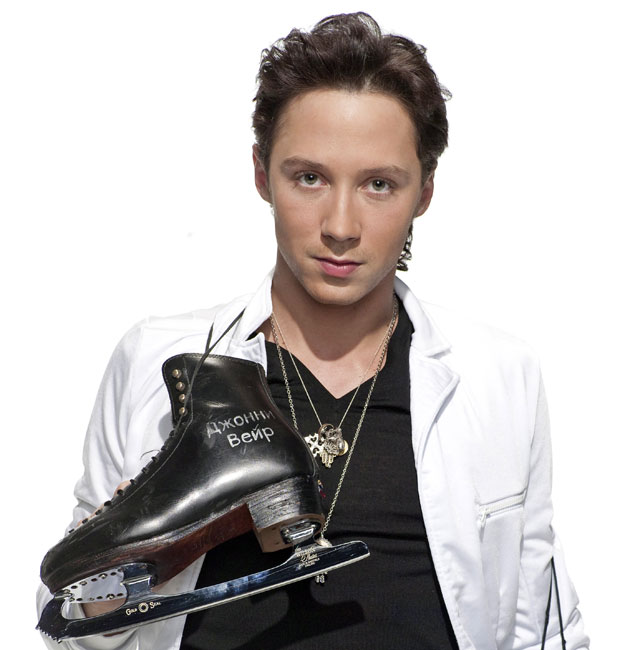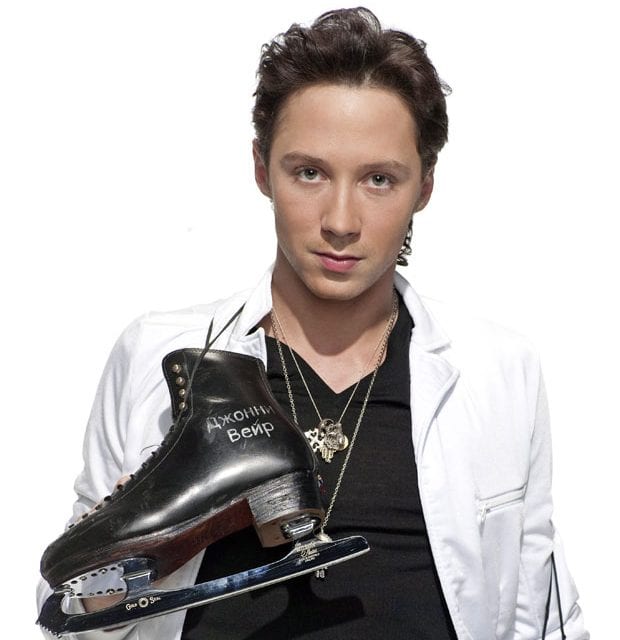Wherein we learn that the outrageous Olympian has matured, but can still bring his skills on the rink — and the runway — to Dallas fans

LOOK SHARP | Johnny Weir may be as well known for his fashion sense as he is for his skating career … and say-anything attitude.
ARNOLD WAYNE JONES | Executive Editor
jones@dallasvoice.com
I have to admit: I approached my interview with Johnny Weir seized by a cocktail of eager anticipation and dread. Here was one of the most iconic American figure skaters of his generation … but also a lightning rod for controversy. He was a talented Olympian, but also a fashionista. Would he be more jock or mean girl? A diva or a dude?
As it turned out, a little bit of both … but also a frank and thoughtful man who has matured into his role as senior statesman of skating.
 “I know Americans really do appreciate figure skating, and what skaters like myself do,” he says from his car outside of New
“I know Americans really do appreciate figure skating, and what skaters like myself do,” he says from his car outside of New
York City. “But as with most Olympic sports, skating has been in and out of fashion. In the 1990s and early 2000s, the skating business was booming, there hasn’t been a great ladies skating star in the United States for quite some time, and the American public looks [for that]. Without a Tara Lipinski or Michelle Kwan, it’s difficult for them to latch onto it.”
It accounts, Weir explains, for why he spends most of his time, when on the ice, overseas — China, Japan, Russia. It means he travels a lot to carve out the career he wants.
“I don’t really live full-time anywhere,” he sighs. “I’m on the East Coast a lot but rarely at home. Last year, I spent 13 nights in my own bed. There are such limited opportunities in the U.S., I’m still hustling and working hard to pay my bills and my taxes. I work a lot.”
Which makes it all the more exciting that you can see him Sunday at the Galleria, in an exhibition performance that also combines his other great passion: fashion.
“Fashion really is a big part of my daily life — more important to me than food on a daily basis!” Weir says. “There are occasions when I have on sweat pants and a ball cap and am just rushing [to get somewhere], but for the most part I dress by mood. What I put on my skin every day really reflects how I feel.”
“How he feels” helped spread the image of Weir for being somewhat capricious and controversial, especially when he’s doing his reality TV show. Weir acknowledges that, for a time, his attitude about how people perceived him was a polite invitation to suck it.
“That is it!” he laughs. “When I had my own reality show, it was a different story. I was on Sundance and then Logo, and while they were popular, they have a niche market. When I started to work on NBC as a commentator, reporting on some of the biggest sporting events in the world, a different level of respect and appreciation came to me. I [cared] more about being respected for being thoughtful and not for being crazy and young.”
Now 31, he says he has lived a lot (“more than my contemporaries I think”), but that his image “is probably the last thing I think about at the end of the day.” But his twin careers — as an athlete and as a tre nd-setter — create a kind of schizophrenia.
nd-setter — create a kind of schizophrenia.
“After I went professional and stopped competing, there [arose] this big divide in my fan bases — those who loved me for my skating, and those entertained by my on-air personality,” including his often outrageous fashion choices. “I never wear clothes for shock value, but I think I should look nice with the hair and makeup for television. But it really is something that flows through my veins.”
And of course that means if you ask Weir about the state of fashion, he’ll happily offer you his opinion.
“It’s an interesting time now, because pretty much anything is acceptable,” he says. “You can wear almost anything, anytime. So when people are showing up at the fanciest restaurants wearing ripped jeans and a blazer, all rules are out the window.”
Weir himself is a great believer in personal style over mainstream fashion. He admits one of his childhood heroes was Oksana Baiul (“That pink feather costume! She was my initial hero … and she came form a small town like me”), so he has always loved “mixing the high with the low. We didn’t [come from a family of means] as a kid, so I found ways to be artistic and fashionable without spending a lot. I love a big luxury brand — an expensive shoe or handbag — but I also love picking up a vintage piece, or something from a random street corner in Taiwan. [I’ll pair] a 30-year-old pair of leather pants with a brand new Chanel blazer.”
The hardest part, he says, is controlling his intake with the closet cleaning.
“I have a hard time getting rid of things — I have to buy bigger homes [to hold my stuff],” he jokes. “But I don’t have an unseen cat carcass in my closet, so I’m not a true hoarder.”
It’s a comfort, though, that he will always have fashion even when he does — eventually — hang up his skates.
“Whether in a stadium or a mall, I really do take my crafter seriously,” he says. “It happens every spring that I am in my slim-down mode — I can’t look like the old fat guy [next to these younger skates]. But there’s only so long my body will be able to hold up to all the jumping and spinning and dieting. It does get very taxing to mix a training schedule with the rest of my life. But I’ll do it as long as I can do it. And I still love it.”
This article appeared in the Dallas Voice print edition April 8, 2016.









